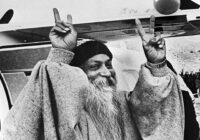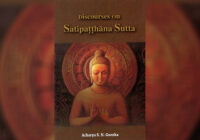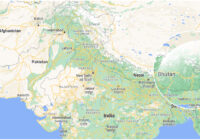Some see the last century as the story of yoga teachers who took this knowledge to far corners of the world and transformed traditional local religion. I have found yoga studios literally everywhere, even in small towns in Peru, South Africa and Hungary.
This historical movement repeats a phenomenon that took place over 2,000 years ago across the Himalayas, both east and west. While the story of yoga and tantra going to China, Japan, Tibet, and Southeast Asia is popular history as part of the spread of Buddhism, only specialist scholars have traced its movement to Samarkand and Bukhara and further to the Slavic lands.
The migration of yoga to Central Asia continued for a thousand years, and something similar may be repeating today. If contemporary interest in yoga focuses on personal well-being through āsanas, at its deepest level yoga is about the nature of consciousness, which is now the frontier of science.
To the lay yoga practitioner the connection between āsanas and consciousness may appear surprising. But if one thinks of it, we are body and mind. While āsanas are good for the body, pranayama and meditation prepares us to recognize the realm of mind and awareness, and finally to control it.
Consciousness intrigues the physicist and the neuroscientist for the promise of explaining the emergence and the location of awareness or the self. AI researchers, sociologists and politicians would like to know whether the future will bring conscious machines. It is clear that if such machines can be built, they will change technology and society in profound ways.
The question of the self is at the heart of consciousness, and it has been central to Indian civilization from the earliest times. In Hinduism, the self is called the ātmā, or Shiva. In Kashmir in north India, which was a great center for science and scholarship associated with Shiva, it was conceived as “Light” (Prakāsha in Sanskrit). Yoga practices are methods to be one with the light within.
If Shiva is light and viewed as the male principle, the body itself through which one strives to see the light is the domain of the goddess, Shakti, and the female principle. yoga is the coming together of Shiva and Shakti, that is light and the knowledge engendered in the mind.
Yoga and the Many Faces of Shiva
A characteristic of the sculptural or artistic representation of Shiva is multiple faces, although in the aniconic form there is no face at all. The idea behind multiple faces is that Shiva as consciousness (ātmā) is present in all directions. In general, representation of Shiva with 1, 3, 4 and 5 faces is quite common with the two-faced representation as half Shiva and half Goddess.
The symbolism with the four faces is described in the Mahabharata: the eastern face represents sovereignty, the northern face represents perfection, the western face represents prosperity, and the southern face represents the control of evil.
Yoga went out across the Himalayas as the worship of Shiva, who was co-opted by Buddhism. In contrast to Hinduism—where ātmā’s transcendence is clearly stated—Buddhism emphasizes the mind and looks at reality through this prism. Since these differences can be explained away as being semantic, Buddhism has had no problem co-opting Vedic gods.
The medieval-era Indonesian literature equates Buddha with Shiva and Janārdana (Vishnu). In modern Bali in Indonesia, Buddha is considered the younger brother of Shiva, which is quite accurate if we map the two to intelligence and intuition, respectively. Shiva and Vishnu are praised in the popular Nīlakaṇṭha chant that Buddhists sing in their temples to this day.
Our consciousness provides us with the sense of time, and Shiva is viewed as Time (Mahākāla) in Chinese and Tibetan Buddhism. Daikokuten, one of the Seven Lucky Gods in Japan, is a form of Shiva. The god enjoys an exalted position as a household deity in Japan.
The influence of yoga has been so pervasive that Hu Shih, one of the most influential figures of modern China, a founder of the May Fourth Movement and president of Peking University, proclaimed in an essay titled Indianization of China that “India conquered and dominated China culturally for twenty centuries without ever having to send a single soldier across her border.”
Zoroastrianism has a binary view of the world as a struggle between good and evil. Over time, it also reconciled its system with that of Hinduism. Shiva Maheshvara was incorporated into the Central Asian Zoroastrian pantheon. The god Zūrvan was portrayed as Brahmā, Ahura Mazda (Adbag) was depicted as Indra, and Veshparkar (Vayu in Sogdian) was represented as Shiva.
Svetovid, Svantovit and the Next Wave
Many Slavic people worshiped gods with multiple heads who were shown in tall wooden statues in their temples. In addition to the three-headed god Triglav, the Slavs had Svetovid, or Svantovid, both of which names have Sanskrit etymology: Svetovid as the “knower of the light”, and Svantovid as the “knower of heart”.
Svetovid, their principal divinity, was depicted as a four-headed god whose main temple stood at Cape Arkona off current day northwest Germany. This temple collected tributes from all Baltic people until it was destroyed by Germanic raiders in the eleventh century.
The four faces of Svetovid are Svarog (north), Perun (west), Lada (south), and Mokosh (east). One can see the Sanskrit cognates of these names in Svarga, Parjanya, Ladah, and Moksha. The derivation from Europe’s own languages for these names is forced and unconvincing.
When we go deeper in the correspondences, we see that they fit in with the four faces of Shiva described in the Mahabharata and also with the geography of Kashmir from where the worship of Shiva is likely to have gone to the Slavic lands.
The abode of the gods was perceived in Kashmir to be just north of the valley in the Harmukh peak, which literally means the “face of Shiva”, and this is Svarga (heavens). The west of the valley is from where the rains come (scholars accept the identity of Perun with Parjanya, that is Indra who brings rains). The south of the valley is the pleasant land of India (Ladah means pleasant in Sanskrit), and the east is where the sun rises (merging with the sun is understood as moksha).
The contemporary coming together of yoga and science has within it the potential of mitigating the inevitable disruptions in society arising from pervasive job losses due to AI, and from the shrinking of populations. The imprimatur of science is behind yoga now. Yoga provides both psychological and physical health benefits, including relief from chronic pain, arthritis, stress, and even a healthier heart.
The celebration of the International Day of yoga by the UN, and the knowledge of the positive effects of yoga practice on health and well-being is facilitating its acceptance in traditional societies. Even a society as religious as Saudi Arabia has decided to include yoga in its school and college curricula. In the next wave, one would expect the spread of the more esoteric aspects of yoga.
[Bella Bible edited this piece.]
The views expressed in this article are the author’s own and do not necessarily reflect Fair Observer’s editorial policy.
Support Fair Observer
We rely on your support for our independence, diversity and quality.
For more than 10 years, Fair Observer has been free, fair and independent. No billionaire owns us, no advertisers control us. We are a reader-supported nonprofit. Unlike many other publications, we keep our content free for readers regardless of where they live or whether they can afford to pay. We have no paywalls and no ads.
In the post-truth era of fake news, echo chambers and filter bubbles, we publish a plurality of perspectives from around the world. Anyone can publish with us, but everyone goes through a rigorous editorial process. So, you get fact-checked, well-reasoned content instead of noise.
We publish 2,500+ voices from 90+ countries. We also conduct education and training programs
on subjects ranging from digital media and journalism to writing and critical thinking. This
doesn’t come cheap. Servers, editors, trainers and web developers cost
money.
Please consider supporting us on a regular basis as a recurring donor or a
sustaining member.
Will you support FO’s journalism?
We rely on your support for our independence, diversity and quality.







Comment